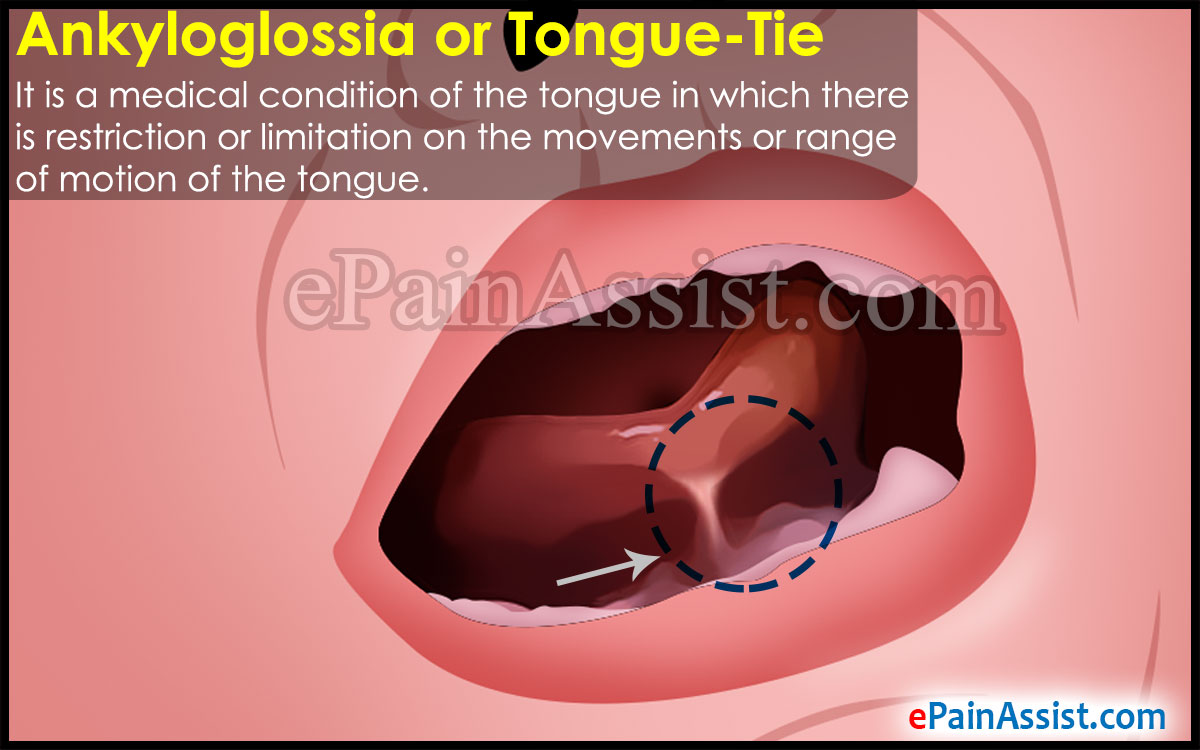What Is Ankyloglossia or Tongue-Tie?
Ankyloglossia or Tongue-Tie is a medical condition of the tongue in which there is restriction or limitation on the movements or range of motion of the tongue. What happens in Ankyloglossia is there is very short, stiff and thick band of tissue, known as lingual frenulum, which ties the bottom of the tip of the tongue to the base of the mouth. Patient usually has difficulty in sticking out his/her tongue, eating, speaking and swallowing, along with difficulty in breast-feeding. There are some cases when the lingual frenulum gets lax over the time and this condition resolves on its own; whereas in some cases Ankyloglossia persists without causing many problems.

Treatment of Ankyloglossia or Tongue-Tie comprises of frenotomy, which is a simple surgery. Another extensive surgical procedure known as frenuloplasty can be done if needed, such as in cases where the lingual frenulum is very thick and frenotomy cannot be done.
Causes & Risk Factors of Ankyloglossia or Tongue-Tie
Majority of the times, the lingual frenulum detaches before birth itself which allows free movement of the tongue. In Ankyloglossia or Tongue-tie, the lingual frenulum, instead of separating, continues to remain attached with the base of the tongue. The cause behind why this happens is not known. However, there are some genetic factors found in some cases which can be the cause.
Ankyloglossia can be easily seen at birth itself. It can also occur in anyone; however, it is commonly seen more in boys than girls. Having a family history of tongue-tie also increases the risk for having it.
Signs & Symptoms of Ankyloglossia or Tongue-Tie
- Patient with Ankyloglossia or tongue-tie is not able to stick out the tongue beyond the lower front teeth.
- Patient experiences difficulty in the range of motion of the tongue, such as lifting the tongue to touch the upper teeth or in moving the tongue from one side to another.
- Whenever the patient with Ankyloglossia or tongue-tie tries to stick out the tongue, it appears as heart shaped or notched.
- If the baby is not able to breast-feed properly, then it is imperative to consult a doctor immediately.
Investigations for Ankyloglossia or Tongue-Tie
Ankyloglossia is diagnosed easily upon a physical exam. A screening tool is used in case of infants, to score and assess the different aspects of the tongue’s appearance and its range of motion.
Treatment for Ankyloglossia or Tongue-Tie
Treatment for Ankyloglossia or Tongue-Tie is divided into correcting it immediately soon after the baby is born or wait-and-see approach, as there are some cases when the lingual frenulum loosens gradually and the condition resolves on its own. Also, there are some patients who have tongue-tie for life long without causing any problems. In infants, treatment with surgery (frenotomy) is required if the tongue-tie hinders breast-feeding. In case of older children/adults who are having problems with this condition, frenuloplasty, which is a major surgical procedure, is recommended.
Frenotomy for Infants
Frenotomy helps in breast feeding by changing the way the baby latches onto the breast. Frenotomy can be done at the doctor’s office with or without anesthesia. During this procedure, the baby’s head will be supported by an assistant and the baby will be swaddled/ restrained, at the time which the doctor will assess the lingual frenulum. After careful inspection, sterile scissors are used to cut the frenulum free from where it is tethered to the base of the tongue. Frenotomy is quick with very less pain, as the there are minimum blood vessels and nerve endings in the lingual frenulum. Bleeding, if present, will be very less, such as a couple of drops of blood. The baby can start to breast-feed immediately after the procedure. Frenotomy complications are rare and include the complications of any surgical procedure, such as infection and bleeding along with damage to the tongue and salivary glands. The frenulum can also reattach back to the floor of the mouth.
Frenuloplasty for Older Children or Adults
If the patient needs additional repair or if frenotomy cannot be performed because the lingual frenulum is very thick, then a frenuloplasty is recommended which is a more extensive surgical procedure. General anesthesia is used for frenuloplasty along with using other surgical tools. The frenulum is released and the wound is closed using sutures, which later on absorb on their own as the healing progresses. Complications of frenuloplasty are the same as with frenotomy with the additional complication being scarring and reactions to the general anesthesia due to the procedure’s extensive nature.
After frenuloplasty is done, the exercises for tongue are recommended to improve movement of the tongue and to decrease the risk of scarring.
